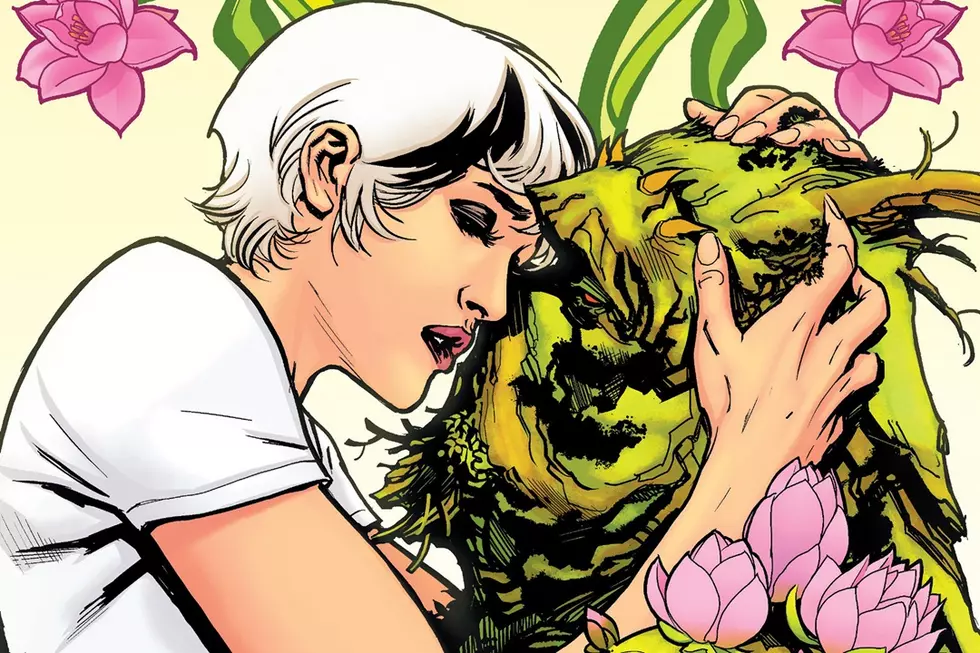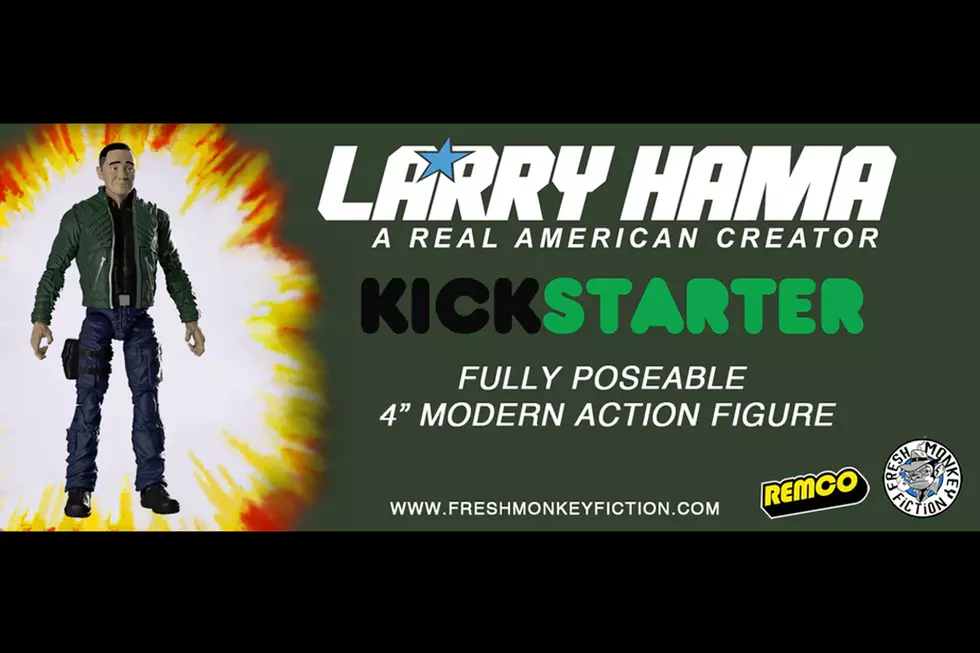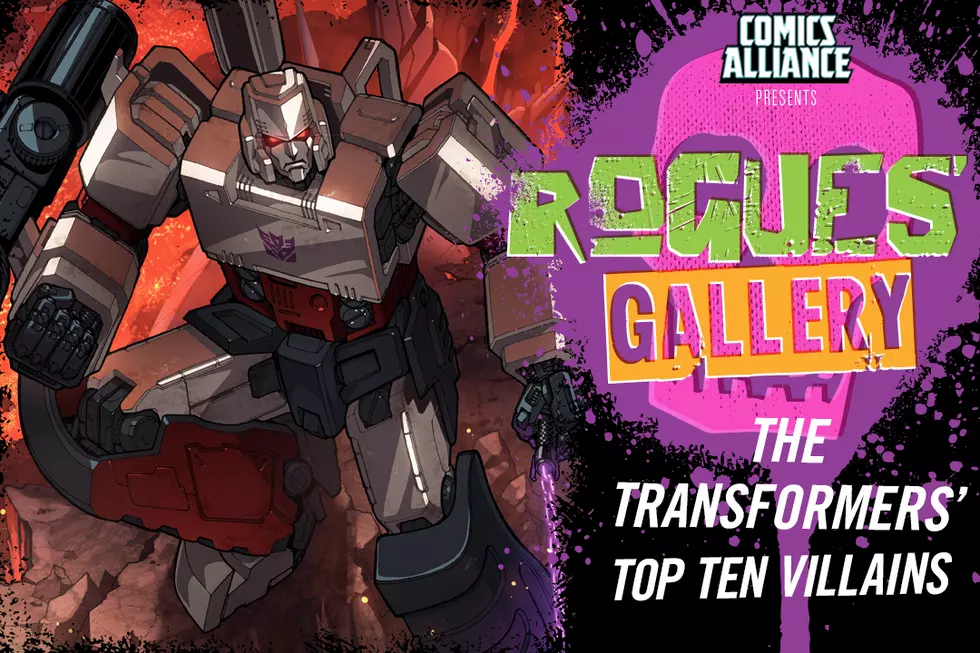
An Adaptation Of A Movie That Doesn’t Exist: Tom Scioli On ‘Transformers vs. GI Joe,’ Part One
To say that Tom Scioli and John Barber's Transformers vs. GI Joe is an unusual comic is underselling things quite a bit. On paper, it's a natural fit, an ongoing series that follows in the footsteps of earlier books that have combined the two toy lines into one massive interplanetary battle. In practice, though, it's something a lot bigger, a comic that almost assaults the reader by cramming in as much big, wild stuff as it possibly can --- a toy comic so weird, and so great, that it almost feels like it shouldn't exist.
With the book's second storyline well under way, throwing in everything from vikings to old gods to Dinobots (and with a new printing of the amazing American Barbarian on the way this summer), I talked to cowriter, artist and occasional ComicsAlliance guest contributor Tom Scioli about the series. Today, in the first part of the interview, he talks about the exhausting process of fitting it all into 20 pages, and reveals the adaptation he wrote for a Transformers vs. GI Joe movie that does not actually exist.
ComicsAlliance: The first thing I want to talk about is pacing. Jumping into Transformers vs. GI Joe #5, which is the start of the second paperback if people are reading it that way, they're getting a comic that moves so fast that it is often hard for me to keep up.
Tom Scioli: Well, issue #5 would be the one, because issue #5 is where it really accelerates. I just find that so many comics have a lot of redundancy, a lot of over-explaining, a lot of images of basically the same thing, so part of the approach is to just eliminate redundancy and just give you the things you need to move the narrative forward. I sort of crossed a point of no return with it, I think, and where that came from is that I wrote a script for a Transformers vs. GI Joe movie adaptation.
You know, the movie doesn't exist yet, but I made a comic as though I was adapting a movie, and how movie adaptations are. There are chunks missing, and jumps because of the time it takes to take an hour and a half movie and put it into a comic, you're going to have to cut some things out. I wrote something with that sort of style in mind, and after I did that, I realized that's a tool I could use any time. It doesn't have to be restricted to this particular conceit, it's just a tool in my arsenal now. It was really effective in that script, which hasn't come out yet, but it was just a really intense reading experience.
CA: You mention that it's not out yet, but is that something that you are planning to put out?
TS: Yeah. Last I talked to them, they said they were going to work on scheduling it. It's going to be the Transformers vs. GI Joe Movie Adaptation, whether it comes out as the Annual or what. It's going to happen, it's just a matter of when.
CA: So there's going to be an annual... that's an adaptation... of a movie that does not exist.
TS: Yeah, exactly.
CA: [Laughs]
TS: But the movie hopefully will exist at some point. This Annual is almost like a way of willing it into existence.
CA: The great thing about that is that if it does come out, you can just reprint the adaptation to go along with it.
TS: Right. It's already good to go. And I approached it as the "Movie Adaptation" as a genre in and of itself, so there are certain things that, since it's a movie, are not going to line up with the comic. There are things that are simplified.
CA: One of the things that really got me was something that you said in the backmatter of #5, where you talked about pacing and how one of the things that makes comics unique as a medium is that the pacing is controlled entirely by the reader.
TS: Right.
CA: There are tricks and techniques, and you can use page layouts and page turns to manipulate them the way you want, but you made the point that the reader can choose to have a page open as long as they want. And in that opening scene of #5, you have that massive double-page spread right at the start, and that has to be almost everyone in the book at that point --- at least everyone who's on Cybertron.
TS: That's been the big challenge of this book in general. You have two books with massive casts, and I didn't make any attempt to pare it down. I didn't make any attempt to say, "Okay, these are the four important GI Joes, these are the four important Transformers." I treat it as a universe, and treat everyone as equally important, depending on who comes to the fore at one moment or another. So yeah, a lot of times I find myself in those situations where there's a lot of personnel, and I try not to shy away from it. I just embrace it and go with it.
CA: How do you and John Barber keep track of it all? Is there one of those Paul Levitz whiteboards, where you have all the characters organized by the plot that they're currently involved in, or, because you're moving so quickly, is it just that you feel free to pull people in and out of parts of the story whenever you need to?
TS: We don't have a whiteboard or anything. It's just a matter of us reminding each other, like, "Oh, we haven't heard from that guy in a while," or, "Okay, this guy was on Earth." It does allow you a certain amount of latitude, but I try to keep it so that there are Earth Joes and Cybertron Joes, but as the two planets get closer together, there's a lot more opportunities for travel back and forth. It's not so much of a hard line between who the Earth Joes and Cybertron Joes [are] as it was in the early issues, where these planets were further from each other.
CA: The interesting thing about that to me is that, like you said, there have been Transformers and GI Joe team-up books before, and now you're doing it as an ongoing series and using the entire cast of both books, as they have existed for thirty years. There's not a whole lot left on the table.
TS: That's one thing I noticed. I was sort of going through all these characters and throwing them in, and now I've sort of reached the point where it's like, "Oh, what Decepticon villain can show up?" and most of them are there already, pretty much. There's an endless number of jets that I can go to, but most of the really resonant ones have shown up, so now it's just getting weird, which is actually interesting. Now we're getting into the Pretenders and the Predacons, all the weirder corners of the mythology.
CA: That's something I wanted to bring up, because you're at the point now where you're creating new stuff.
TS: I want to go more in that direction. I thought doing a comic like this, that's an established thing, would be easier --- having a universe that's already established that I'm just building up. But I'm seeing the limitations of it. I really do want to just create more and add more to it. It's not so complete a cosmology that there's a character for every season. I thought there would be a character for every occasion, and in a lot of cases there are. I needed a character who was a chef, and, okay, Roadblock is a chef, I can use him. But there are a lot of holes in the mythology that I'm trying to fill in.
That last Transformers movie... they went nuts. It almost wasn't even Transformers anymore, it was this infinite universe of every kind of creature you can imagine, and that freed me up too, realizing that I could make this universe whatever I wanted it to be. It doesn't have to just be giant robots that turn into cars or dinosaurs, it can be a universe.
CA: You're bringing in stuff like Koh-Buru-Lah.
TS: Yeah, that was my own creation. In GI Joe, they do occasionally have these Lovecraftian creatures that show up, so this is along those lines. I've sort of brought forth this third faction. There's the Joe faction and the Transformers faction, but now there's these Reptilians that have a historic rivalry with both the humans and the robots. They're the spoilers in this race.
CA: Obviously, you're a creator who enjoys, at the very least, putting things together in new ways, and you enjoy creating new stuff, but has there ever been a moment over the past year for you and John where it gets to be overwhelming?
TS: It's always overwhelming. This is hard work. It's hard to call it hard work, because it's just me sitting on my couch or something, but it's heavy creative lifting. I probably have the names wrong, but I think it was John Byrne talking to John Romita --- some Marvel guy talking to another Marvel guy --- and telling him, "When you're working on a team book, it's going to wear you out." It's so much more work than a Spider-Man or a Batman, a solo character, and this is like a team book squared. There's a lot of characters, there's a lot of voices floating around in my head, characters competing for airtime. It's exhausting. I feel like I'm earning my bread with this book.
CA: Even just going into it as a reader, as someone who loves GI Joe and has this newfound love for Transformers, it's a book that's exhausting to get through. I've talked about it and the word I used was "assaultive."
TS: [Laughs]
CA: You have to sit down and prepare yourself and then open it up and hope it doesn't blow you away.
TS: Again, to me, you can engage with it to whatever degree you want to. I don't know what to attribute it to, whether it's just a personal evolution of storytelling or whether it's specific to this, but with American Barbarian or Satan's Soldier, I tried to make very easily digested works. I think this is not as easily digested, but I think it's also a much more complex work. There's so many more moving pieces, and for the amount of events, story, character and revelations per issue, it does go down kind of smooth. Otherwise, an issue would be a year's worth of continuity for another comic.
CA: Even just formally, there are layouts in here that blow my mind. As a fan of your work in the past, that's something I'm always struck by, but in #5, you have this splash page of Fortress Maximus, and his body is broken down into panels, and the panels correspond to where the characters are within his body, but they're also sequential, and there's also dialogue in two languages.
TS: Mmhmm.
CA: That's the sort of thing where I see it, and I just have to stop.
TS: There's a page limit for each issue, too. It's a 20-page comic. I would be able to make this comic a lot faster if I could make it 24 pages or 30 pages, but I put so much pressure on myself to make every issue worth the four bucks that there's an incredible effort getting it to fit into 20 pages. That's the biggest challenge I deal with.
After doing webcomics, I thought "Well, I'll never have to restrict myself to a specific format," but here I am restricted to a specific format. It's like writing a sonnet or a haiku. I like the creative challenge of getting as much mileage as you can out of a very limited format.
CA: How do you approach the page layouts like that? "Oh, I'm just going to have panels that are blocks making up a robot, and that robot's head is a smaller robot, and that robot's head is a smaller robot."
TS: It's just a lot of working and reworking. I drew that sequence a number of ways, and not all that way either. I drew it in a sort of conventional way, breaking it down, and they all take too long. They take up too much real estate and too many pages. It's a matter of writing a story and trying to compress and compress and compress, and I just happened on that as a solution. A lot of these things are the result of intense compression, just cooking things down.
It's a different process. I've never done a comic like this before. I find it an exciting way to work. It's really labor intensive and really intense, but I set that for myself as the creative challenge. I didn't want to get lazy. When you're doing webcomics and something that's self-motivated and on your own, it is easy to get lazy. I wanted to counter that by spending however many years I work on this with intense, rigorous discipline.
In Part Two: Scioli discusses the century-spanning history of the Transformers vs. GI Joe universe, and why it's even more important than the real world.
More From ComicsAlliance

![The Dreadnoks Are Back At It Again In ‘GI Joe’ #3 [Preview]](http://townsquare.media/site/622/files/2017/03/GIJoe00.jpg?w=980&q=75)


![Unsinkable Ship: The 100% Logical, Provable Case for ‘Lost Light’s’ Nautica/Velocity [Love & Sex Week]](http://townsquare.media/site/622/files/2017/02/nautica-velocity-feature.png?w=980&q=75)




